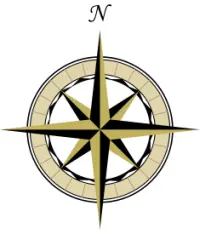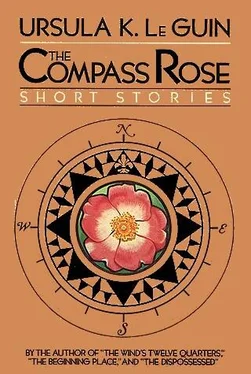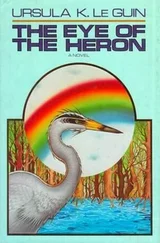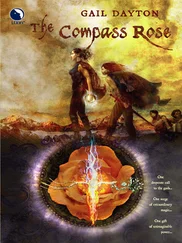Several of us had borne children and had helped with deliveries, and anyhow most of what needs to be done is fairly self-evident; but a first labor can be long and trying, and we were all anxious, while Teresa was frightened out of her wits. She kept calling for her José till she was as hoarse as a skua. Zoe lost all patience at last and said, “By God, Teresa, if you say ‘José!’ once more I hope you have a penguin!” But what she had, after twenty long hours, was a pretty little red-faced girl.
Many were the suggestions for that child’s name from her eight proud midwife-aunts: Polita, Penguina, McMurdo, Victoria… But Teresa announced, after she had had a good sleep and a large serving of pemmican , “I shall name her Rosa— Rosa del Sur,” Rose of the South. That night we drank the last two bottles of Veuve Clicquot (having finished the pisco at 88° 30' South) in toasts to our little Rose.
On the nineteenth of February, a day early, my Juana came down into Buenos Aires in a hurry. “The ship,” she said, “the ship has come,” and she burst into tears—she who had never wept in all our weeks of pain and weariness on the long haul.
Of the return voyage there is nothing to tell. We came back safe.
In 1912 all the world learned that the brave Norwegian Amundsen had reached the South Pole; and then, much later, came the accounts of how Captain Scott and his men had come there after him, but did not come home again.
Just this year, Juana and I wrote to the captain of the Yelcho, for the newspapers have been full of the story of his gallant dash to rescue Sir Ernest Shackleton’s men from Elephant Island, and we wished to congratulate him, and once more to thank him. Never one word has he breathed of our secret. He is a man of honor, Luis Pardo.
I add this last note in 1929. Over the years we have lost touch with one another. It is very difficult for women to meet, when they live so far apart as we do. Since Juana died, I have seen none of my old sledge-mates, though sometimes we write. Our little Rosa del Sur died of the scarlet fever when she was five years old. Teresa had many other children. Carlota took the veil in Santiago ten years ago. We are old women now, with old husbands, and grown children, and grandchildren who might some day like to read about the Expedition. Even if they are rather ashamed of having such a crazy grandmother, they may enjoy sharing in the secret. But they must not let Mr. Amundsen know! He would be terribly embarrassed and disappointed. There is no need for him or anyone else outside the family to know. We left no footprints, even.
About the author

A resident of Portland, Oregon, Ursula K. Le Guin was born in California, graduated from Radcliffe and earned her master’s degree at Columbia University. One of the most distinguished authors of our time and winner of numerous awards, including the National Book Award, the Nebula and the Hugo, she has written many novels and short stories. Among her best known books are The Left Hand of Darkness, The Dispossessed and The Earthsea Trilogy. Her latest novel, The Eye of the Heron, was recently published in hardcover.
This low-priced Bantam Book has been completely reset in a type face designed for easy reading, and was printed from new plates. It contains the complete text of the original hard-cover edition.
NOT ONE WORD HAS BEEN OMITTED.
THE COMPASS ROSE
A Bantam Book / published by arrangement with Harper & Row, Publishers, Inc.
PRINTING HISTORY
Harper & Row edition published July 1982
A Featured Alternate of Doubleday Book Club, and a Selection of Science Fiction Book Club October/November 1982 Bantam edition / July 1983
All rights reserved.
Copyright © 1982 by Ursula K. Le Guin.
Cover art copyright © 1983 by Yvonne Gilbert.
COPYRIGHT NOTICES AND ACKNOWLEDGMENTS
The copyright notices are listed below and on page v, which constitutes an extension of this copyright page.
Acknowledgment is made of points of first publication:
“The Author of the Acacia Seeds and Other Extracts from the Journal of the Association of Therolinguisties” first appeared in Fellowship of the Stars, edited by Terry Carr (Simon & Schuster); copyright © 1974 by Ursula K. Le Guin.
“The New Atlantis” first appeared in The New Atlantis, edited by Robert Silverberg (Hawthorn); copyright © 1975 by Ursula K. Le Guin.
“Schrodinger’s Cat” first appeared in Universe 5, edited by Terry Carr (Random House); copyright © 1974 by Ursula K. Le Guin.
“Two Delays on the Northern Line” first appeared in The New Yorker, copyright © 1979 by Ursula K. Le Guin.
“SQ” first appeared in Cassandra Rising, edited by Alice Laurance (Doubleday); copyright © 1978 by Ursula K. Le Guin.
“Small Change” first appeared in Tor zu den Stemen, edited by Peter Wilfert (Goldmann Verlag); copyright © 1981 by Ursula K. Le Guin.
“The First Report of the Shipwrecked Foreigner to the Kadanh of Derb” first appeared in Antaeus, copyright © 1978 by Ursula K. Le Guin.
“The Diary of the Rose” first appeared in Future Power, edited by Gardner Dozois and Jack Dann (Random House); copyright © 1976 by Ursula K. Le Guin.
“The White Donkey” first appeared in TriQuarterly, copyright © 1980 by Ursula K. Le Guin.
“The Phoenix” appears for the first time in this volume.
“Intracom” first appeared in Stopwatch, edited by George Hay (New English Library); copyright © 1974 by Ursula K. Le Guin.
“The Eye Altering” first appeared in The Altered 1, edited by Lee Harding (Norstrilia Press); copyright © 1976 by Ursula K. Le Guin.
“Mazes” first appeared in Epoch, edited by Roger Elwood A Robert Silverberg (Berkley Publishing Corporation); copyright © 1975 by Ursula K. Le Guin.
“The Pathways of Desire” first appeared in New Dimensions 9 edited by Robert Silverberg (Harper & Row); copyright © 1979 by Ursula K. Le Guin.
“Gwilan’s Harp” first appeared in Redbook; copyright © 1977 by Ursula K. Le Guin.
“Malheur County” first appeared in Kenyon Review, copyright © 1979 by Ursula K. Le Guin.
“The Water Is Wide” first appeared as a chapbook published by Pendragon Press, copyright © 1976 by Ursula K. Le Guin.
“The Wife’s Story” appears for the first time in this volume, but was written for the anthology, Changes, edited by Michael Bishop and Ian Watson; their forebearance is much appreciated by the author.
“Some Approaches to the Problem of the Shortage of Time” first appeared in abridged form under the title “Where Does the Time Go?” in Omni, copyright © 1979 by Ursula K. Le Guin.
“Sur” first appeared in The New Yorker, copyright © 1982 by Ursula K. Le Guin.
This book may not be reproduced in whole or in partt by mimeograph or any other means, without permission.
For information address: Harper & Row, Publishers, Inc.,
10 East 53rd Street, New York, N.Y. 10022.
ISBN 0-553-23512-5
Published simultaneously in the United States and Canada
Bantam Books are published by Bantam Books, Inc. Its trademark, consisting of the words "Bantam Books” and the portrayal of a rooster, is Registered in U.S. Patent and Trademark Office and in other countries.
Читать дальше





